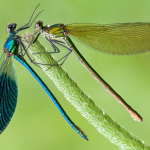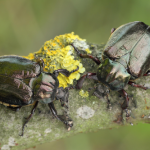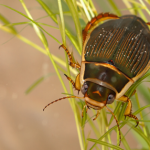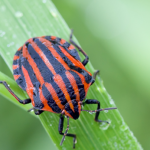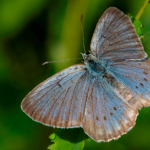 Foto: Andrzej Staśkowiak
Foto: Andrzej Staśkowiak
Scarce large blue (Maculinea teleius)
The scarce large blues are tiny butterflies with a blue-brown color. You can see them on moist meadows, in river valleys and moors. They look very nice but hardly anyone knows that such a small butterfly is a social parasite – a cheat and a predator. For its development it needs the presence of the host plant – Sanguisorba officinalis, and red ants of the genus Myrmica. In the first three weeks of their life, the young larvae feed exclusively on the flowers of Sanguisorba officinalis. After this period they fall to the ground and begin to pretend to be ant larvae. They produce a sweet secretion which attracts worker bees and makes them adopt them as their own larva. Ants carry these small “sweet factories” to the anthill. Here the caterpillar spends the entire winter, feeding on the host offspring. The clever caterpillar even smells like ant larvae, so that its conduct does not raise any suspicion. In such favorable conditions it increases its weight by a hundred times. In spring the scarce large blue ends its transformation and leaves the anthill as an adult butterfly. It is an endangered species. For this reason it is subject to protection under Natura 2000. For the preservation of its natural habitat – wet meadows – it is necessary to stick to their traditional use (mowing, cattle grazing).




